
Deutsch-Chinesische Enzyklopädie, 德汉百科

勃兰登堡门(Brandenburger Tor)位于柏林市中心菩提树大街和6月17日大街的交汇处,是柏林市区著名的游览胜地和德国统一的象征。
公元1753年,普鲁士国王弗里德利希·威廉一世定都柏林,下令修筑共有14座城门的柏林城,因此门坐西朝东,弗里德利希·威廉一世便以国王家族的发祥地勃兰登命名。初时此门仅为一座用两根巨大的石柱支撑的简陋石门。
1788年,普鲁士国王弗里德利希·威廉二世统一德意志帝国,为表庆祝,遂重建此门。当时德国著名建筑学家卡尔·歌德哈尔·阆汉斯 受命承担设计与建筑工作,他以雅典古希腊柱廊式城门为蓝本,设计了这座凯旋门式的城门,并于1791年竣工。重建后的城门高20米,宽65.6米,进深 11米,门内有5条通道,中间的通道最宽。据史书记载,中间的通道在1918年德皇退位前仅允许皇族成员行走。门内各通道之间用巨大的砂岩条石隔开,条石 的两端各饰6根高达14米、底部直径为1.70米的多立克式立柱。为使此门更辉煌壮丽,当时德国著名的雕塑家戈特弗里德·沙多又为此门顶端设计了一套青铜 装饰雕像:四匹飞驰的骏马拉着一辆双轮战车,战车上站着一位背插双翅的女神,她一手执杖一手提辔,一只展翅欲飞的普鲁士飞鹰鹫立在女神手执的饰有月桂花环 的权杖上。在各通道内侧的石壁上镶嵌着沙多创作的20幅描绘古希腊神话中大力神海格拉英雄事迹的大理石浮雕画。30幅反映古希腊和平神话“和平征战”的大 理石浮雕装饰在城门正面的石门楣上。此门建成之后曾被命名为“和平之门”,战车上的女神被称为“和平女神”。
1806年10月普 法战争爆发,法国将军拿破仑率领法军打败普鲁士军队,同年10月23日法国军队穿过勃兰登堡门进入柏林,后拿破仑下令拆卸门顶上的女神及驷马战车作为战利 品拉回巴黎。1814年欧洲同盟军在滑铁卢大败拿破仑后,普鲁士将其索回,重新安放在此门顶上。为此,德国著名雕家申克尔又雕刻了一枚象征普鲁士民族解放 战争胜利的铁十字架,镶在女神的月桂花环中。从此,和平女神被改称为胜利女神,此门也逐渐成为德意志帝国的象征。
第二次世界大战中,勃兰登堡门遭到严重损坏,门顶上的女神及驷马战车亦被盟军炸毁。1945年5月苏联红军正是穿过此门攻入柏林,攻克了希特勒的地堡和国会大厦,宣告了第三帝国的灭亡。
德意志民主共和国成立后,曾于1956─1958年全面修复勃兰登堡门。东、西柏林的文物修复专家根据在二战中抢拓下来的石膏模型和档案照片重新铸造了一套驷马战车及女神雕像,民主德国政府在安装时去掉了女神权杖中的铁十字架和普鲁士鹰鹫。
1961年8月13日,民主德国政府围绕西柏林修筑了一道围墙,封锁了勃兰登堡门,并在东、西柏林分界处建起“柏林墙”,勃兰登堡 门处在东、西柏林的交界点上,成了柏林墙的一部分。柏林墙在勃兰登堡门后划了一道弧形并向左右两边延伸将整个柏林隔成两半。作为德意志统一象征的勃兰登堡 门成了军事禁区,也成了德国分裂的标志。
1989年12月31日,两德重新统一前夕,勃兰登堡门重新开放。1992年,经过彻底维修后的铜车马及女神像又重新安放在勃兰登堡门上。(Quelle:http://news.xinhuanet.com)
Das Brandenburger Tor in Berlin ist ein frühklassizistisches Triumphtor, das an der Westflanke des quadratischen Pariser Platzes im Berliner Ortsteil Mitte steht. Es wurde als Abschluss der zentralen Prachtstraße der Dorotheenstadt, dem Boulevard Unter den Linden, in den Jahren von 1789[1] bis 1793[2] auf Anweisung des preußischen Königs Friedrich Wilhelm II. nach Entwürfen von Carl Gotthard Langhans errichtet. Die das Tor krönende Skulptur der Quadriga ist ein Werk nach dem Entwurf des Bildhauers Johann Gottfried Schadow. Westlich des Brandenburger Tores befinden sich die ausgedehnten Grünflächen des Großen Tiergartens, die in gradliniger Verlängerung der Straße Unter den Linden von der Straße des 17. Juni durchquert werden. Die Platzfläche unmittelbar westlich des Tores trägt den Namen Platz des 18. März.
Das Tor ist das einzig erhaltene von zuletzt 18 Berliner Stadttoren.[3] In der Formensprache stellt es die Hinwendung vom römischen zum griechischen Vorbild dar.[3] Es ist eines der ersten klassizistischen Bauwerke in Preußen und markiert hiermit den Beginn des Klassizismus als staatstragende Architektur in Preußen.
Das Tor ist eines der bekanntesten Berliner Wahrzeichen und nationales Symbol, mit dem viele wichtige geschichtliche Ereignisse des 19. und 20. Jahrhunderts verbunden sind. So wurde bis zum Zweiten Weltkrieg vor allem das Ende der napoleonischen Herrschaft 1813–1815 mit dem Bauwerk verbunden. In der Weimarer Republik wurde hier alljährlich am 11. August der Verfassungstag begangen. Nach starken Kriegszerstörungen wurde das Tor bis 1957 wiederaufgebaut. Eine umfassende, knapp zweijährige Sanierung fand bis 2002 durch die Stiftung Denkmalschutz Berlin statt.
Heute wird das Tor vor allem als Symbol des freiheitlich-demokratischen, wiedervereinigten Deutschlands angesehen. Bis zum Fall des Eisernen Vorhangs stand es unmittelbar an der Grenze zwischen Ost- und West-Berlin und damit im Kalten Krieg an der Grenze zwischen dem Warschauer Pakt und der NATO.


大英博物馆是世界上历史最悠久、规模最宏伟的综合性博物馆,位于英国伦敦。它收藏了世界各地的许多文物和图书珍品,藏品之丰富、种类之繁多为全世界博物馆所罕见。藏品主要是英国于18世纪至19世纪发起的战争中掠夺得来,主要受害国家包括希腊、埃及及中国等。大英博物馆位于伦敦中心,是一座规模庞大的古罗马柱式建筑,十分壮观。这里珍藏的文物和图书资料在世界上久负盛名。大英博物馆建于1753年,6年后正式开 放,原来主要收藏图书,后来兼收历史文物和各国古代艺术品,其中不少是仅存的珍本。18世纪至19世纪中叶,英帝国向世界扩张,对各国进行文化掠夺,大量 珍贵文物运抵伦敦,数量之多,大英博物馆盛不下,只得分藏于各个博物馆。目前,埃及文物馆是其中最大的陈列馆,有7万多件古埃及各种文物,代表着古埃及的高度文明。希腊和罗马文物馆、东方文物馆的大量文物反映了古希腊罗马、古代中国的灿烂文化。
大英博物馆(英语:British Museum)是一座于英国伦敦的综合博物馆,也是世界上规模最大、最著名的博物馆之一,成立于1753年。目前博物馆拥有藏品800多万件。由于空间的限制,目前还有大批藏品未能公开展出。博物馆在1759年1月15日起正式对公众开放。
大英博物馆的渊源最早可追溯到1753年。汉斯·斯隆(1660至1753年)爵士是当时的一位著名收藏家,1753年他去世后遗留下来的个人藏品达71000件,还有大批植物标本及书籍、手稿。根据他的遗嘱,所有藏品都捐赠给国家。这些藏品最后被交给了英国国会。在通过公众募款筹集建筑博物馆的资金后,大英博物馆最终于1759年1月15日在伦敦市区附近的蒙塔古大楼(Montague Building)成立并对公众开放。[来源请求]
博物馆在开放后通过英国人在各地的各种活动攫取了大批珍贵藏品,早期的大英博物馆倾向于收集自然历史标本,但也有大量文物、书籍,因此吸引了大批参观者。到了19世纪初,蒙塔古大楼已经显得不敷使用了。于是1824年博物馆决定在蒙塔古大楼北面建造一座新馆,并在1840年代完成,旧蒙塔古大楼不久后便被拆除。新馆建成后不久又在院子里建了对公众开放的圆形阅览室。
由于空间的限制,1880年大英博物馆将自然历史标本与考古文物分离,大英博物馆专门收集考古文物。1973年,博物馆再次重新划分,将书籍、手稿等内容分离组成新的大英图书馆。
大中庭(Great Court)位于大英博物馆中心,于2000年12月建成开放,目前是欧洲最大的有顶广场。广场的顶部是用3312块三角形的玻璃片组成的。广场中央为大英博物馆的阅览室,对公众开放。
大英博物馆阅览室原来属于大英图书馆,但图书馆阅览室已经搬到了图书馆大楼,现在为博物馆的阅览室。
大英博物馆目前分为10个研究和专业馆:非洲、大洋洲和美洲馆;古埃及和苏丹馆;亚洲馆;不列颠、欧洲和史前时期馆;硬币和纪念币馆;保护和科学研究馆;希腊和罗马馆;中东馆;便携古物和珍宝馆;版画和素描馆。
Das British Museum (BM, deutsch: Britisches Museum) in London ist eines der größten und bedeutendsten kulturgeschichtlichen Museen der Welt. Das Natural History Museum war einst Teil des British Museum und ist seit 1963 eigenständig. Die British Museum Library war früher die größte Bibliothek des Landes. 1973 bildete sie den Grundstock für die neu gegründete British Library.
Das Museum entstand, als 1753 der Arzt und Wissenschaftler Sir Hans Sloane seine sehr umfangreiche Literatur- und Kunstsammlung dem Staat übereignete. Das Parlament beschloss, diese Sammlung unter dem Namen British Museum zu erhalten und zu pflegen. Das Museum wurde im Montagu House, einem Herrenhaus im ehemaligen Londoner Stadtteil Bloomsbury, eingerichtet, und öffnete seine Pforten am 15. Januar 1759. Bedingt durch die stetig wachsende Sammlung und steigende Besucherzahlen wurde 1824 der Umzug in ein größeres, neu zu errichtendes Gebäude beschlossen. 1850 war der Umzug abgeschlossen, und die Gebäude hatten im Wesentlichen ihre heutige Gestalt. Den wichtigsten Impuls zur modernen Ausweitung der Sammlungsbestände erhielt das Museum mit der Anstellung von Augustus Wollaston Franks, zunächst 1851 als Assistent für die damals neugeschaffene Abteilung für britische und mittelalterliche Geschichte, dann von 1866 bis 1896 als deren Kurator. Für die Museumshistorikerin Marjorie Caygill wurde Franks zum „vermutlich wichtigste[n] Sammler in der Geschichte des Britischen Museums“.[2] Im Laufe der Zeit wurden verschiedene Teile der Sammlung aus Platzgründen in andere Gebäude verlegt.
大英博物館(だいえいはくぶつかん、英: British Museum)は、イギリス・ロンドンにある博物館である。
世界最大の博物館の一つで、古今東西の美術品や書籍や略奪品など約800万点が収蔵されている(うち常設展示されているのは約15万点)。収蔵品は美術品や書籍のほかに、考古学的な遺物・標本・硬貨やオルゴールなどの工芸品、世界各地の民族誌資料など多岐に渡る。イギリス自身のものも所蔵・展示されている。余りに多岐にわたることから、常設展示だけでも一日で全てを見ることはほぼ不可能である[3]。
世界中の博物館との連携による巡回展計画や途上国の博物館への技術協力なども進められている。教育計画も充実しており、学校との連携した教育計画、家族向け教育計画、成人向け教育計画、障害者や移民・亡命希望者など社会的弱者のための教育計画などがある。また、「アジア美術修了証書」という大学院修士課程水準の教育過程も博物館教育計画の一環として提供されている。
来館者の約56%が外国人観光客といわれている。このため各国語版の案内書も充実しており、入り口脇や屋根中庭(グレート・コート)にある販売店では公式案内書が販売されているが、この中には日本語版 (£6) も見られる。
The British Museum, in the Bloomsbury area of London, United Kingdom, is a public institution dedicated to human history, art and culture. Its permanent collection of some eight million works is among the largest and most comprehensive in existence,[3] having been widely sourced during the era of the British Empire. It documents the story of human culture from its beginnings to the present.[a] It was the first public national museum in the world.[4]
The British Museum was established in 1753, largely based on the collections of the Irish physician and scientist Sir Hans Sloane.[5] It first opened to the public in 1759, in Montagu House, on the site of the current building. Its expansion over the following 250 years was largely a result of expanding British colonisation and has resulted in the creation of several branch institutions, the first being the Natural History Museum in 1881.
In 1973, the British Library Act 1972 detached the library department from the British Museum, but it continued to host the now separated British Library in the same Reading Room and building as the museum until 1997. The museum is a non-departmental public body sponsored by the Department for Digital, Culture, Media and Sport, and as with all national museums in the UK it charges no admission fee, except for loan exhibitions.[6]
Its ownership of some of its most famous objects originating in other countries is disputed and remains the subject of international controversy, most notably in the case of the Parthenon Marbles.[7]
Sir Hans Sloane
Although today principally a museum of cultural art objects and antiquities, the British Museum was founded as a "universal museum". Its foundations lie in the will of the Irish physician and naturalist Sir Hans Sloane (1660–1753), a London-based doctor and scientist from Ulster. During the course of his lifetime, and particularly after he married the widow of a wealthy Jamaican planter[8], Sloane gathered a large collection of curiosities and, not wishing to see his collection broken up after death, he bequeathed it to King George II, for the nation, for a sum of £20,000.[9]
At that time, Sloane's collection consisted of around 71,000 objects of all kinds[10] including some 40,000 printed books, 7,000 manuscripts, extensive natural history specimens including 337 volumes of dried plants, prints and drawings including those by Albrecht Dürer and antiquities from Sudan, Egypt, Greece, Rome, the Ancient Near and Far East and the Americas.[11]
Foundation (1753)
On 7 June 1753, King George II gave his Royal Assent to the Act of Parliament which established the British Museum.[b] The British Museum Act 1753 also added two other libraries to the Sloane collection, namely the Cottonian Library, assembled by Sir Robert Cotton, dating back to Elizabethan times, and the Harleian Library, the collection of the Earls of Oxford. They were joined in 1757 by the "Old Royal Library", now the Royal manuscripts, assembled by various British monarchs. Together these four "foundation collections" included many of the most treasured books now in the British Library[13] including the Lindisfarne Gospels and the sole surviving manuscript of Beowulf.[c]
The British Museum was the first of a new kind of museum – national, belonging to neither church nor king, freely open to the public and aiming to collect everything. Sloane's collection, while including a vast miscellany of objects, tended to reflect his scientific interests.[14] The addition of the Cotton and Harley manuscripts introduced a literary and antiquarian element and meant that the British Museum now became both National Museum and library.[15]
Cabinet of curiosities (1753–1778)
The body of trustees decided on a converted 17th-century mansion, Montagu House, as a location for the museum, which it bought from the Montagu family for £20,000. The trustees rejected Buckingham House, on the site now occupied by Buckingham Palace, on the grounds of cost and the unsuitability of its location.[16][d]
With the acquisition of Montagu House, the first exhibition galleries and reading room for scholars opened on 15 January 1759.[17] At this time, the largest parts of collection were the library, which took up the majority of the rooms on the ground floor of Montagu House and the natural history objects, which took up an entire wing on the second state storey of the building. In 1763, the trustees of the British Museum, under the influence of Peter Collinson and William Watson, employed the former student of Carl Linnaeus, Daniel Solander to reclassify the natural history collection according to the Linnaean system, thereby making the Museum a public centre of learning accessible to the full range of European natural historians.[18] In 1823, King George IV[19] gave the King's Library assembled by George III, and Parliament gave the right to a copy of every book published in the country, thereby ensuring that the museum's library would expand indefinitely. During the few years after its foundation the British Museum received several further gifts, including the Thomason Collection of Civil War Tracts and David Garrick's library of 1,000 printed plays. The predominance of natural history, books and manuscripts began to lessen when in 1772 the museum acquired for £8,410 its first significant antiquities in Sir William Hamilton's "first" collection of Greek vases.[20]
Indolence and energy (1778–1800)
From 1778, a display of objects from the South Seas brought back from the round-the-world voyages of Captain James Cook and the travels of other explorers fascinated visitors with a glimpse of previously unknown lands. The bequest of a collection of books, engraved gems, coins, prints and drawings by Clayton Mordaunt Cracherode in 1800 did much to raise the museum's reputation; but Montagu House became increasingly crowded and decrepit and it was apparent that it would be unable to cope with further expansion.[21]
The museum's first notable addition towards its collection of antiquities, since its foundation, was by Sir William Hamilton (1730–1803), British Ambassador to Naples, who sold his collection of Greek and Roman artefacts to the museum in 1784 together with a number of other antiquities and natural history specimens. A list of donations to the museum, dated 31 January 1784, refers to the Hamilton bequest of a "Colossal Foot of an Apollo in Marble". It was one of two antiquities of Hamilton's collection drawn for him by Francesco Progenie, a pupil of Pietro Fabris, who also contributed a number of drawings of Mount Vesuvius sent by Hamilton to the Royal Society in London.
Growth and change (1800–1825)
In the early 19th century the foundations for the extensive collection of sculpture began to be laid and Greek, Roman and Egyptian artefacts dominated the antiquities displays. After the defeat of the French campaign in the Battle of the Nile, in 1801, the British Museum acquired more Egyptian sculptures and in 1802 King George III presented the Rosetta Stone – key to the deciphering of hieroglyphs.[22] Gifts and purchases from Henry Salt, British consul general in Egypt, beginning with the Colossal bust of Ramesses II in 1818, laid the foundations of the collection of Egyptian Monumental Sculpture.[23] Many Greek sculptures followed, notably the first purpose-built exhibition space, the Charles Towneley collection, much of it Roman Sculpture, in 1805. In 1806, Thomas Bruce, 7th Earl of Elgin, ambassador to the Ottoman Empire from 1799 to 1803 removed the large collection of marble sculptures from the Parthenon, on the Acropolis in Athens and transferred them to the UK. In 1816 these masterpieces of western art, were acquired by The British Museum by Act of Parliament and deposited in the museum thereafter.[24] The collections were supplemented by the Bassae frieze from Phigaleia, Greece in 1815. The Ancient Near Eastern collection also had its beginnings in 1825 with the purchase of Assyrian and Babylonian antiquities from the widow of Claudius James Rich.[25]
In 1802 a buildings committee was set up to plan for expansion of the museum, and further highlighted by the donation in 1822 of the King's Library, personal library of King George III's, comprising 65,000 volumes, 19,000 pamphlets, maps, charts and topographical drawings.[26] The neoclassical architect, Sir Robert Smirke, was asked to draw up plans for an eastern extension to the museum "... for the reception of the Royal Library, and a Picture Gallery over it ..."[27] and put forward plans for today's quadrangular building, much of which can be seen today. The dilapidated Old Montagu House was demolished and work on the King's Library Gallery began in 1823. The extension, the East Wing, was completed by 1831. However, following the founding of the National Gallery, London in 1824,[e] the proposed Picture Gallery was no longer needed, and the space on the upper floor was given over to the Natural history collections.[28]
The largest building site in Europe (1825–1850)
The museum became a construction site as Sir Robert Smirke's grand neo-classical building gradually arose. The King's Library, on the ground floor of the East Wing, was handed over in 1827, and was described as one of the finest rooms in London. Although it was not fully open to the general public until 1857, special openings were arranged during The Great Exhibition of 1851. In spite of dirt and disruption the collections grew, outpacing the new building.[citation needed]
In 1840, the museum became involved in its first overseas excavations, Charles Fellows's expedition to Xanthos, in Asia Minor, whence came remains of the tombs of the rulers of ancient Lycia, among them the Nereid and Payava monuments. In 1857, Charles Newton was to discover the 4th-century BC Mausoleum of Halikarnassos, one of the Seven Wonders of the Ancient World. In the 1840s and 1850s the museum supported excavations in Assyria by A.H. Layard and others at sites such as Nimrud and Nineveh. Of particular interest to curators was the eventual discovery of Ashurbanipal's great library of cuneiform tablets, which helped to make the museum a focus for Assyrian studies.[29]
Sir Thomas Grenville (1755–1846), a trustee of the British Museum from 1830, assembled a library of 20,240 volumes, which he left to the museum in his will. The books arrived in January 1847 in twenty-one horse-drawn vans. The only vacant space for this large library was a room originally intended for manuscripts, between the Front Entrance Hall and the Manuscript Saloon. The books remained here until the British Library moved to St Pancras in 1998.
Collecting from the wider world (1850–1875)
The opening of the forecourt in 1852 marked the completion of Robert Smirke's 1823 plan, but already adjustments were having to be made to cope with the unforeseen growth of the collections. Infill galleries were constructed for Assyrian sculptures and Sydney Smirke's Round Reading Room, with space for a million books, opened in 1857. Because of continued pressure on space the decision was taken to move natural history to a new building in South Kensington, which would later become the British Museum of Natural History.
Roughly contemporary with the construction of the new building was the career of a man sometimes called the "second founder" of the British Museum, the Italian librarian Anthony Panizzi. Under his supervision, the British Museum Library (now part of the British Library) quintupled in size and became a well-organised institution worthy of being called a national library, the largest library in the world after the National Library of Paris.[15] The quadrangle at the centre of Smirke's design proved to be a waste of valuable space and was filled at Panizzi's request by a circular Reading Room of cast iron, designed by Smirke's brother, Sydney Smirke.[30]
Until the mid-19th century, the museum's collections were relatively circumscribed but, in 1851, with the appointment to the staff of Augustus Wollaston Franks to curate the collections, the museum began for the first time to collect British and European medieval antiquities, prehistory, branching out into Asia and diversifying its holdings of ethnography. A real coup for the museum was the purchase in 1867, over French objections, of the Duke of Blacas's wide-ranging and valuable collection of antiquities. Overseas excavations continued and John Turtle Wood discovered the remains of the 4th century BC Temple of Artemis at Ephesos, another Wonder of the Ancient World.[31]
Scholarship and legacies (1875–1900)
The natural history collections were an integral part of the British Museum until their removal to the new British Museum of Natural History in 1887, nowadays the Natural History Museum. With the departure and the completion of the new White Wing (fronting Montague Street) in 1884, more space was available for antiquities and ethnography and the library could further expand. This was a time of innovation as electric lighting was introduced in the Reading Room and exhibition galleries.[32]
The William Burges collection of armoury was bequeathed to the museum in 1881. In 1882, the museum was involved in the establishment of the independent Egypt Exploration Fund (now Society) the first British body to carry out research in Egypt. A bequest from Miss Emma Turner in 1892 financed excavations in Cyprus. In 1897 the death of the great collector and curator, A. W. Franks, was followed by an immense bequest of 3,300 finger rings, 153 drinking vessels, 512 pieces of continental porcelain, 1,500 netsuke, 850 inro, over 30,000 bookplates and miscellaneous items of jewellery and plate, among them the Oxus Treasure.[33]
In 1898 Baron Ferdinand de Rothschild bequeathed the Waddesdon Bequest, the glittering contents from his New Smoking Room at Waddesdon Manor. This consisted of almost 300 pieces of objets d'art et de vertu which included exquisite examples of jewellery, plate, enamel, carvings, glass and maiolica, among them the Holy Thorn Reliquary, probably created in the 1390s in Paris for John, Duke of Berry. The collection was in the tradition of a schatzkammer or treasure house such as those formed by the Renaissance princes of Europe.[34] Baron Ferdinand's will was most specific, and failure to observe the terms would make it void, the collection should be
placed in a special room to be called the Waddesdon Bequest Room separate and apart from the other contents of the Museum and thenceforth for ever thereafter, keep the same in such room or in some other room to be substituted for it.[34]
These terms are still observed, and the collection occupies room 45, although it moved to new quarters in 2015.
New century, new building (1900–1925)
By the last years of the 19th century, The British Museum's collections had increased to the extent that its building was no longer large enough. In 1895 the trustees purchased the 69 houses surrounding the museum with the intention of demolishing them and building around the west, north and east sides of the museum. The first stage was the construction of the northern wing beginning 1906.
All the while, the collections kept growing. Emil Torday collected in Central Africa, Aurel Stein in Central Asia, D.G. Hogarth, Leonard Woolley and T. E. Lawrence excavated at Carchemish. Around this time, the American collector and philanthropist J Pierpont Morgan donated a substantial number of objects to the museum,[35] including William Greenwell's collection of prehistoric artefacts from across Europe which he had purchased for £10,000 in 1908. Morgan had also acquired a major part of Sir John Evans's coin collection, which was later sold to the museum by his son John Pierpont Morgan Junior in 1915. In 1918, because of the threat of wartime bombing, some objects were evacuated via the London Post Office Railway to Holborn, the National Library of Wales (Aberystwyth) and a country house near Malvern. On the return of antiquities from wartime storage in 1919 some objects were found to have deteriorated. A conservation laboratory was set up in May 1920 and became a permanent department in 1931. It is today the oldest in continuous existence.[36] In 1923, the British Museum welcomed over one million visitors.
Disruption and reconstruction (1925–1950)
New mezzanine floors were constructed and book stacks rebuilt in an attempt to cope with the flood of books. In 1931, the art dealer Sir Joseph Duveen offered funds to build a gallery for the Parthenon sculptures. Designed by the American architect John Russell Pope, it was completed in 1938. The appearance of the exhibition galleries began to change as dark Victorian reds gave way to modern pastel shades.[f] However, in August 1939, due to the imminence of war and the likelihood of air-raids, the Parthenon Sculptures, along with the museum's most valued collections, were dispersed to secure basements, country houses, Aldwych Underground station, the National Library of Wales and a quarry. The evacuation was timely, for in 1940 the Duveen Gallery was severely damaged by bombing.[38] Meanwhile, prior to the war, the Nazis had sent a researcher to the British Museum for several years with the aim of "compiling an anti-Semitic history of Anglo-Jewry."[39] After the war, the museum continued to collect from all countries and all centuries: among the most spectacular additions were the 2600 BC Mesopotamian treasure from Ur, discovered during Leonard Woolley's 1922–34 excavations. Gold, silver and garnet grave goods from the Anglo-Saxon ship burial at Sutton Hoo (1939) and late Roman silver tableware from Mildenhall, Suffolk (1946). The immediate post-war years were taken up with the return of the collections from protection and the restoration of the museum after the Blitz. Work also began on restoring the damaged Duveen Gallery.
A new public face (1950–1975)
In 1953, the museum celebrated its bicentenary. Many changes followed: the first full-time in house designer and publications officer were appointed in 1964, the Friends organisation was set up in 1968, an Education Service established in 1970 and publishing house in 1973. In 1963, a new Act of Parliament introduced administrative reforms. It became easier to lend objects, the constitution of the board of trustees changed and the Natural History Museum became fully independent. By 1959 the Coins and Medals office suite, completely destroyed during the war, was rebuilt and re-opened, attention turned towards the gallery work with new tastes in design leading to the remodelling of Robert Smirke's Classical and Near Eastern galleries.[40] In 1962 the Duveen Gallery was finally restored and the Parthenon Sculptures were moved back into it, once again at the heart of the museum.[g]
By the 1970s the museum was again expanding. More services for the public were introduced; visitor numbers soared, with the temporary exhibition "Treasures of Tutankhamun" in 1972, attracting 1,694,117 visitors, the most successful in British history. In the same year the Act of Parliament establishing the British Library was passed, separating the collection of manuscripts and printed books from the British Museum. This left the museum with antiquities; coins, medals and paper money; prints & drawings; and ethnography. A pressing problem was finding space for additions to the library which now required an extra 1 1⁄4 miles (2.0 km) of shelving each year. The Government suggested a site at St Pancras for the new British Library but the books did not leave the museum until 1997.
The Great Court emerges (1975–2000)
The departure of the British Library to a new site at St Pancras, finally achieved in 1998, provided the space needed for the books. It also created the opportunity to redevelop the vacant space in Robert Smirke's 19th-century central quadrangle into the Queen Elizabeth II Great Court – the largest covered square in Europe – which opened in 2000. The ethnography collections, which had been housed in the short-lived Museum of Mankind at 6 Burlington Gardens from 1970, were returned to new purpose-built galleries in the museum in 2000.
The museum again readjusted its collecting policies as interest in "modern" objects: prints, drawings, medals and the decorative arts reawakened. Ethnographical fieldwork was carried out in places as diverse as New Guinea, Madagascar, Romania, Guatemala and Indonesia and there were excavations in the Near East, Egypt, Sudan and the UK. The Weston Gallery of Roman Britain, opened in 1997, displayed a number of recently discovered hoards which demonstrated the richness of what had been considered an unimportant part of the Roman Empire. The museum turned increasingly towards private funds for buildings, acquisitions and other purposes.[42]
The British Museum today
Today the museum no longer houses collections of natural history, and the books and manuscripts it once held now form part of the independent British Library. The museum nevertheless preserves its universality in its collections of artefacts representing the cultures of the world, ancient and modern. The original 1753 collection has grown to over thirteen million objects at the British Museum, 70 million at the Natural History Museum and 150 million at the British Library.
The Round Reading Room, which was designed by the architect Sydney Smirke, opened in 1857. For almost 150 years researchers came here to consult the museum's vast library. The Reading Room closed in 1997 when the national library (the British Library) moved to a new building at St Pancras. Today it has been transformed into the Walter and Leonore Annenberg Centre.
With the bookstacks in the central courtyard of the museum empty, the demolition for Lord Foster's glass-roofed Great Court could begin. The Great Court, opened in 2000, while undoubtedly improving circulation around the museum, was criticised for having a lack of exhibition space at a time when the museum was in serious financial difficulties and many galleries were closed to the public. At the same time the African collections that had been temporarily housed in 6 Burlington Gardens were given a new gallery in the North Wing funded by the Sainsbury family – with the donation valued at £25 million.[43]
As part of its very large website, the museum has the largest online database of objects in the collection of any museum in the world, with 2,000,000 individual object entries, 650,000 of them illustrated, online at the start of 2012.[44] There is also a "Highlights" database with longer entries on over 4,000 objects, and several specialised online research catalogues and online journals (all free to access).[45] In 2013 the museum's website received 19.5 millions visits, an increase of 47% from the previous year.[46]
In 2013 the museum received a record 6.7 million visitors, an increase of 20% from the previous year.[46] Popular exhibitions including "Life and Death in Pompeii and Herculaneum" and "Ice Age Art" are credited with helping fuel the increase in visitors.[47] Plans were announced in September 2014 to recreate the entire building along with all exhibits in the video game Minecraft in conjunction with members of the public.[48]
Le British Museum (en français « Musée britannique », appellation couramment utilisée jusqu'au XXe siècle, mais devenue rare), est un musée de l'histoire et de la culture humaine, situé à Londres, au Royaume-Uni. Ses collections, constituées de plus de sept millions d’objets, sont parmi les plus importantes du monde et proviennent de tous les continents. Elles illustrent l’histoire humaine de ses débuts à aujourd'hui.
Le musée a été fondé en 1753 et ouvert au public en 1759. Son statut actuel de non-departmental public body lui permet d’être financé par le département de la Culture, des Médias et du Sport. Le British Museum compte six millions de visiteurs par an et s'affiche comme le site touristique le plus fréquenté de Grande-Bretagne. Comme dans la plupart des musées et galeries d’art du Royaume-Uni, l’entrée est gratuite, à l’exception de certaines expositions temporaires ; les dons sont encouragés.
Le British Museum fut créé en 1753, à partir notamment des collections du médecin et scientifique Sir Hans Sloane. Le musée a été ouvert au public le 15 janvier 1759 à la Montagu House à Bloomsbury, au même emplacement qu'aujourd'hui ; il comptait alors quelque 80 000 objets. Les collections s’enrichirent notamment avec les contributions du capitaine Cook, et de William Hamilton (archéologue et diplomate britannique). La défaite de Napoléon en Égypte (campagne d'Égypte) permit d’acquérir des pièces d'art égyptiennes, dont la pierre de Rosette. Puis au début du XIXe siècle, Lord Elgin, ambassadeur à Constantinople, amena au musée des sculptures du monde grec.
En 1865, un nouveau bâtiment fut construit, rue Great Russell dans le quartier de Tottenham Court, pour remplacer l'ancien (Montagu House), devenu trop petit et qui fut détruit. Le bâtiment comporte une vaste salle de lecture dans laquelle Karl Marx et nombre d'écrivains, philosophes et savants illustres ont travaillé, par exemple Charles Dickens. L'écrivain Angus Wilson fit une partie de sa carrière dans cette salle, où il exerça les fonctions de Deputy Superintendent (il démissionna en 1955 pour se consacrer à l'écriture). Le musée proprement dit a alors le même aspect qu'aujourd'hui.
Les collections d’histoire naturelle furent déplacées dans un nouveau musée (musée d'histoire naturelle de Londres, Natural History Museum) à South Kensington en 1880. Jusqu'en 1997, le British Museum avait la particularité d'héberger dans le même bâtiment un musée et une bibliothèque nationale (la British Library est depuis cette date située près de la gare de Saint-Pancras). Enfin en décembre 2000, on ajouta au musée la « Grande Cour1 ».
Parmi les nombreuses expositions provisoires hébergée par le British Museum tout au long de son histoire, la plus importante fut « The First Emperor: China's Terracotta Army », qui s'est tenue du 13 septembre 2007 à avril 2008 et a rassemblé 120 objets et 12 soldats de terre cuite provenant du mausolée de Qin Shi Huang, le premier empereur de Chine2. Cette exposition a fait de 2008 l'année où le British Museum a reçu le plus de visiteurs de toute son histoire et a permis au musée d’être l’attraction culturelle la plus visitée du Royaume-Unis en 2007 et 20083,4. La dernière fois qu'une exposition avait amené autant de visiteurs dans le musée, c'était celle de 1972 consacrée au pharaon Toutânkhamon3. Selon le quotidien The Washington Post, les 400 000 billets mis en vente à l'avance se sont vendus si vite que le musée a dû prolonger ses heures d'ouverture jusqu'à minuit pour faire face à l'affluence5. Et selon The Times, malgré cet allongement des horaires d'ouvertures, beaucoup de gens ont dû être refoulés à l'entrée du musée6. Le plus grand nombre de visite a eu lieu le jour des festivités organisées pour marquer le Nouvel An chinois, où la foule était tellement importante que les portes du musée ont dû être fermées pour des raisons de sécurité6. L'armée de terre cuite a été décrite comme le seul ensemble d'objets historiques, en dehors de ceux provenant de l'épave du RMS Titanic, pouvant attirer une telle foule juste grâce à son nom5.
Il British Museum (in italiano: Museo Britannico) è uno dei più grandi e importanti musei della storia del mondo. È stato fondato nel 1753 da Sir Hans Sloane,[1] un medico e scienziato che ha collezionato un patrimonio letterario e artistico nel suo nucleo originario: la biblioteca di Montague House a Londra, in seguito acquistata dallo Stato britannico per ventimila sterline e aperta al pubblico il 15 gennaio 1759. L'attuale presidente è Sir John Boyd.[2]
Il museo ospita circa 8 milioni di oggetti che testimoniano la storia e la cultura materiale dell'umanità dalle origini alla contemporaneità. Si trova a Great Russell Street, nella città di Londra.
El Museo Británico (en inglés: The British Museum) es un museo de la ciudad de Londres, Reino Unido, uno de los museos más importantes y visitados del mundo. Sus colecciones abarcan campos diversos del saber humano, como la historia, la arqueología, la etnografía y el arte.
El museo fue una de las primeras instituciones de este tipo en Europa, siendo el primer museo nacional en el mundo.2 Custodia más de ocho millones de objetos de todos los continentes, muchos de los cuales se encuentran almacenados para su estudio y restauración, o guardados por falta de espacio para exhibirlos. Cuenta con la mayor sala de lectura de la Biblioteca Británica, biblioteca que, aunque ahora tiene sede propia, hasta el año 1973 también formaba parte del museo, al igual que el Museo de Historia Natural de Londres, que cambió a sede propia en el año 1963.
La sección del Antiguo Egipto es la más importante del mundo después de la del Museo Egipcio de El Cairo. La entrada al museo y a muchos de los servicios que ofrece —como el de la sala de lectura— es libre y gratuita, a excepción de algunas exposiciones temporales.
Британский музей (англ. the British Museum) — главный историко-археологический музей Британской империи (ныне — Великобритании) и один из крупнейших музеев в мире, второй по посещаемости, среди художественных музеев, после Лувра[2]. Находится в районе Блумсбери, Лондон.
Британский музей был создан в 1753 году на основе трёх коллекций — коллекции известного британского врача и натуралиста Хэнса Слоуна[3], коллекции графа Роберта Харли, а также библиотеки антиквара Роберта Коттона, которая стала основой Британской библиотеки. Создание музея было утверждено актом Британского парламента.
Первоначально музей разместился в Монтегю-хаусеruen — аристократическом особняке, расположенном в лондонском районе Блумсбери. Он открылся для посетителей в 1759 году. Собрание расширялось за счёт приобретения античных ваз Уильяма Гамильтона (1772), т. н. мраморов Таунли (1804, 1814), коллекции минералов Гревиля (1810). В 1814—1815 годы парламент выкупил у лорда Эльджина бесценные шедевры из афинского Парфенона. Многие из музейных приобретений (как, например, Розеттский камень) попали в Англию при тёмных обстоятельствах. Греция и Египет, из которых были вывезены древние памятники, до сих пор требуют их возвращения назад.
В XIX веке Британский музей переживал особенно бурный период роста. Собрание было разделено на отделы, в том числе нумизматический, где собраны монеты и медали различных стран и эпох, включая древнегреческие, древнеримские и персидские, а также коллекцию короля Георга IV. Зоологический, ботанический, геологический и минералогический отделы были при королеве Виктории выделены в особый Музей естествознания и переведены в 1845 в Южный Кенсингтон. На месте Монтегю-хауса было в 1823—1847 гг. выстроено ныне существующее здание музея в стиле классицизма (архитектор Роберт Смёрк).
В первой половине XX века Британский музей расширил свои собрания ближневосточного искусства за счёт проведения британскими археологами многочисленных раскопок в Месопотамии. Раздел древневосточного искусства наиболее ценной частью своего собрания обязан А. Стейну и П. Дэвиду. С 1926 года Британский музей издаёт ежеквартальный журнал «British Museum Quarterly». В конце XX века была проведена перепланировка внутреннего пространства по проекту Нормана Фостера.
По воспоминаниям Н. Накорякова, Ленин называл Британский музей «скоплением колоссальных богатств, награбленных Англией из колониальных стран»[4].
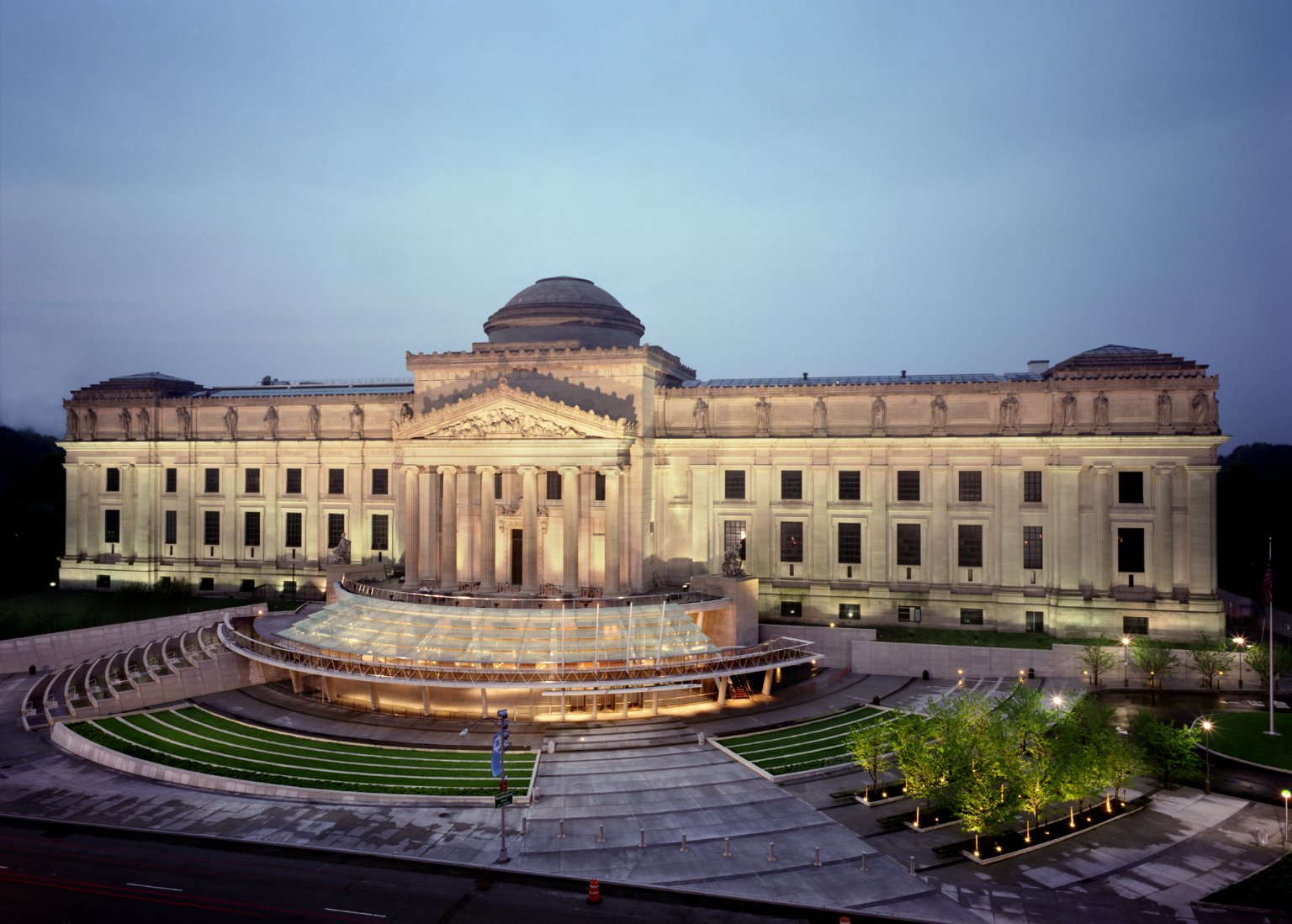

1703年至1705年,白金汉和诺曼比公爵约翰·谢菲尔德在此兴建了一处大型镇厅建筑“白金汉屋”,构成了今天的主体建筑,1761年,乔治三世获得该府邸,并作为一处私人寝宫。此后宫殿的扩建工程持续超过了75年,主要由建筑师约翰·纳西和爱德华·布罗尔主 持,为中央庭院构筑了三侧建筑。1837年,维多利亚女王登基后,白金汉宫成为英王正式宫寝。19世纪末20世纪初,宫殿公共立面修建,形成延续至今天白 金汉宫形象。二战期间,宫殿礼拜堂遭一枚德国炸弹袭击而毁;在其址上建立的女王画廊于1962年向公众开放,展示皇家收藏品。现在的白金汉宫对外开放参 观,每天清晨都会进行著名的禁卫军交接典礼,成为英国王室文化的一大景观。
白金汉宫(英语:Buckingham Palace、英国 /ˈbʌkɪŋəm/)[1] )是一座位于英国伦敦的皇家寝宫,也是英国君主的行政总部[注 1]。是英国君主位于伦敦的主要寝宫及办公处。宫殿坐落在大伦敦威斯敏斯特城,是国家庆典和王室欢迎礼举行场地之一,也是一处重要的旅游景点。在英国历史上的欢庆或危机时刻,白金汉宫也是一处重要的集会场所。
1703年至1705年,白金汉和诺曼比公爵约翰·谢菲尔德在此兴建了一处大型镇厅建筑“白金汉屋”,构成了今天的主体建筑,1761年,乔治三世获得该府邸[2],并作为一处私人寝宫。此后宫殿的扩建工程持续超过了75年,主要由建筑师约翰·纳什和爱德华·布罗尔主持,为中央庭院构筑了三侧建筑。1837年,维多利亚女王登基后,白金汉宫成为英王正式宫寝。
19世纪末20世纪初,宫殿公共立面修建,形成延续至今日白金汉宫的形象。第二次世界大战期间,宫殿礼拜堂遭一枚德国炸弹袭击而毁;在其址上建立的女王画廊于1962年向公众开放,展示皇家收藏等相关收藏品。现在的白金汉宫对外开放参观,每天清晨都会进行著名的禁卫军交接典礼,成为英国王室文化的一大景观。[3]当前宫殿设有775间房间,其中花园是伦敦最大的私人花园。用于官方和国家娱乐活动的国事厅于每年8月和9月的大部分时间,以及冬季和春季的某些日子向公众开放。
Der Buckingham Palace (deutsch Buckingham-Palast) ist die offizielle Residenz des britischen Monarchen in London. Das Gebäude im Stadtbezirk City of Westminster dient auch offiziellen Staatsanlässen. So werden dort ausländische Staatsoberhäupter bei ihrem Besuch in Großbritannien empfangen. Daneben ist er ein wichtiger Anziehungspunkt für Touristen.
Im Jahr 1703 wurde er als großes Stadthaus für John Sheffield, 1. Duke of Buckingham and Normanby, gebaut. König Georg III. erwarb das Haus 1761[1] als private Residenz. Während der nächsten 75 Jahre wurde der Palast nach und nach erweitert, hauptsächlich unter Georg IV. ab 1826 durch die Architekten John Nash und Edward Blore. Das Gebäude umfasste schließlich drei Flügel um einen Innenhof. Mit der Thronbesteigung von Königin Victoria im Jahr 1837 wurde der Palast zur offiziellen Residenz des britischen Monarchen. Der Verwaltungssitz der Monarchie verblieb jedoch im St James’s Palace, so dass heute immer noch die ausländischen Botschafter am Hof von St. James akkreditiert werden, obwohl sie ihre Beglaubigungsschreiben des Monarchen im Buckingham Palace überreichen.
Die letzte bedeutende Erweiterung am Palast geschah zu Zeiten Victorias, als ein Gebäudeflügel in Richtung der Ostseite als Abschluss zur Straße The Mall hinzugefügt wurde. Dabei wurde der Eingang für Staatsgäste, der Marmorbogen (Marble Arch), abgebaut und an seinem gegenwärtigen Standort in der Nähe der Speakers’ Corner im Hyde Park wiedererrichtet. Die Ostfassade wurde im Jahr 1913 mit Portland-Kalkstein verkleidet, um den Hintergrund für das Victoria Memorial zu bilden. Dabei wurde das heute sehr bekannte öffentliche Gesicht des Buckingham Palace geschaffen.
Die ursprüngliche georgianische Inneneinrichtung beinhaltete auf Vorschlag von Sir Charles Long die großzügige Verwendung von Marmormalerei („Scagliola“) in leuchtenden Farben sowie blaue und rosafarbene Lapislazuli. Unter König Eduard VII. fand eine großangelegte Neuausstattung im Stil der Belle Époque statt. Dabei wurde ein Farbschema aus einer Kombination von Cremetönen und Gold verwendet.
Die Gärten des Buckingham Palace sind die größten privaten Gärten in London. Die Landschaftsarchitektur stammte zunächst von Capability Brown. Sie wurde jedoch später von William Ailton, dem Architekten der Royal Botanic Gardens, und John Nash verändert. Der künstliche See wurde 1828 vollendet und wird von Wasser aus der Serpentine, einem See im Hyde Park, gespeist.

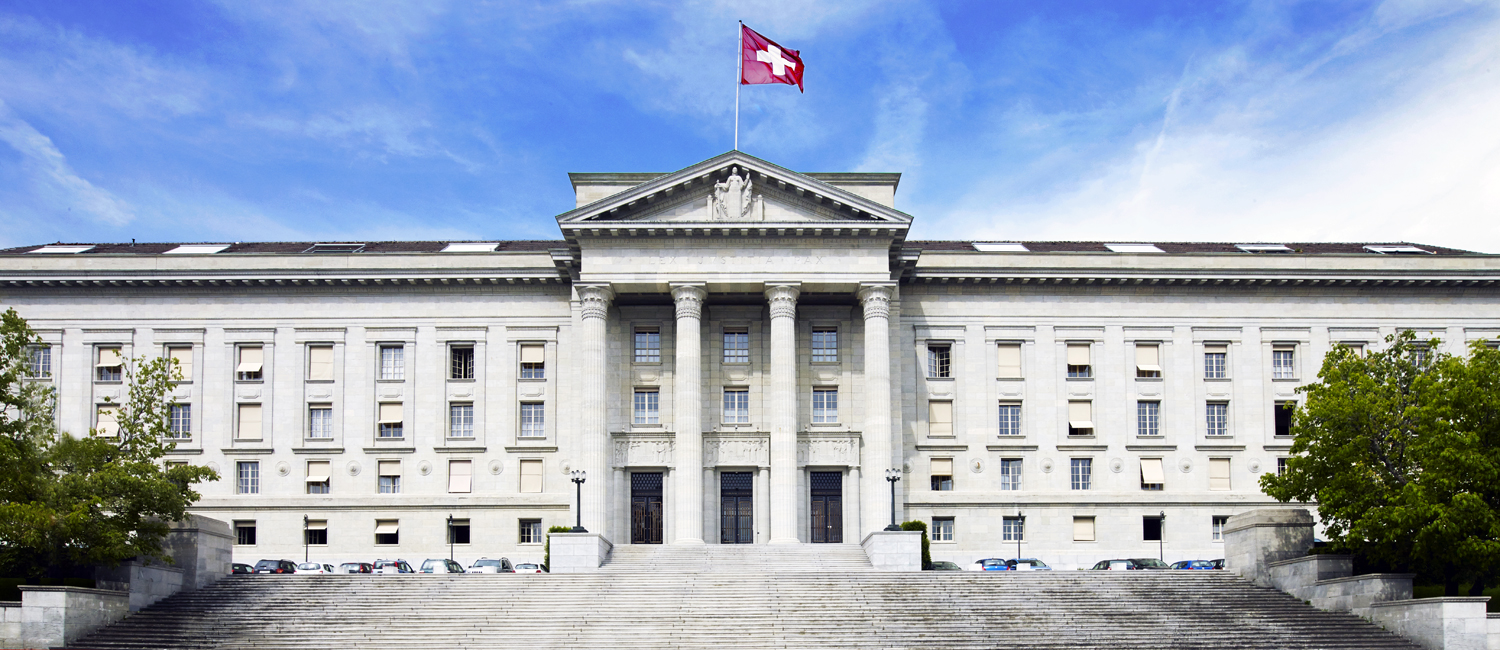

 *Politisches System Deutschlands
*Politisches System Deutschlands
 Deutschland
Deutschland

 Europäische Union
Europäische Union
 Oberstes Gericht der Mitgliedstaaten der EU
Oberstes Gericht der Mitgliedstaaten der EU

 Gesetz
Gesetz
 §Oberstes Gericht
§Oberstes Gericht

 Parteien und Regierung
Parteien und Regierung
 Bundesbehörden Deutschland
Bundesbehörden Deutschland

 Sachsen
Sachsen

 Urlaub und Reisen
Urlaub und Reisen


 *Capitols in den Vereinigten Staaten
*Capitols in den Vereinigten Staaten
 *Politisches System der Vereinigten Staaten
*Politisches System der Vereinigten Staaten

 California-CA
California-CA
 Vereinigte Staaten
Vereinigte Staaten

 Architektur
Architektur
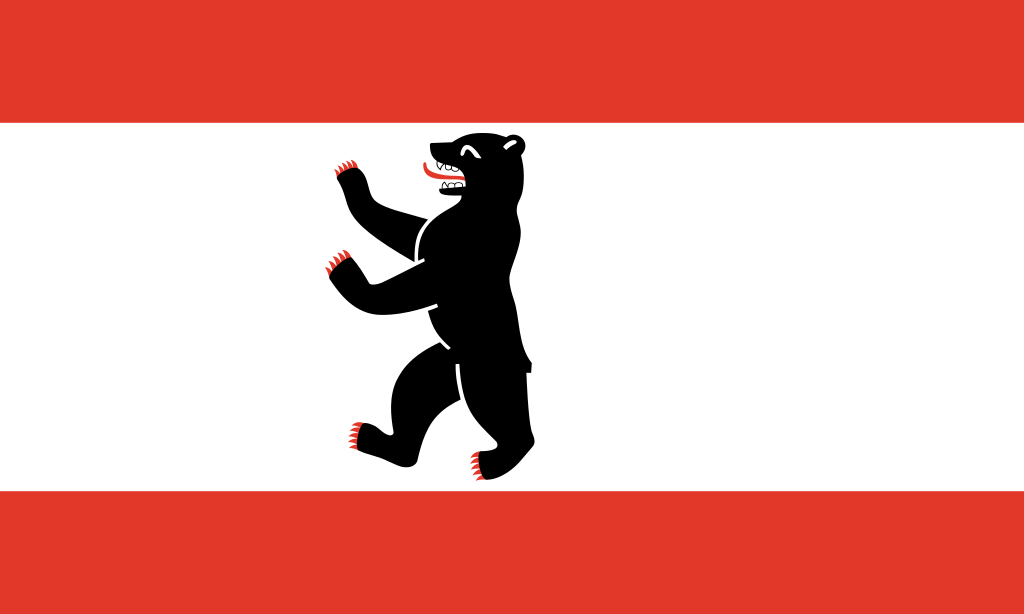 Berlin
Berlin
 Geschichte
Geschichte
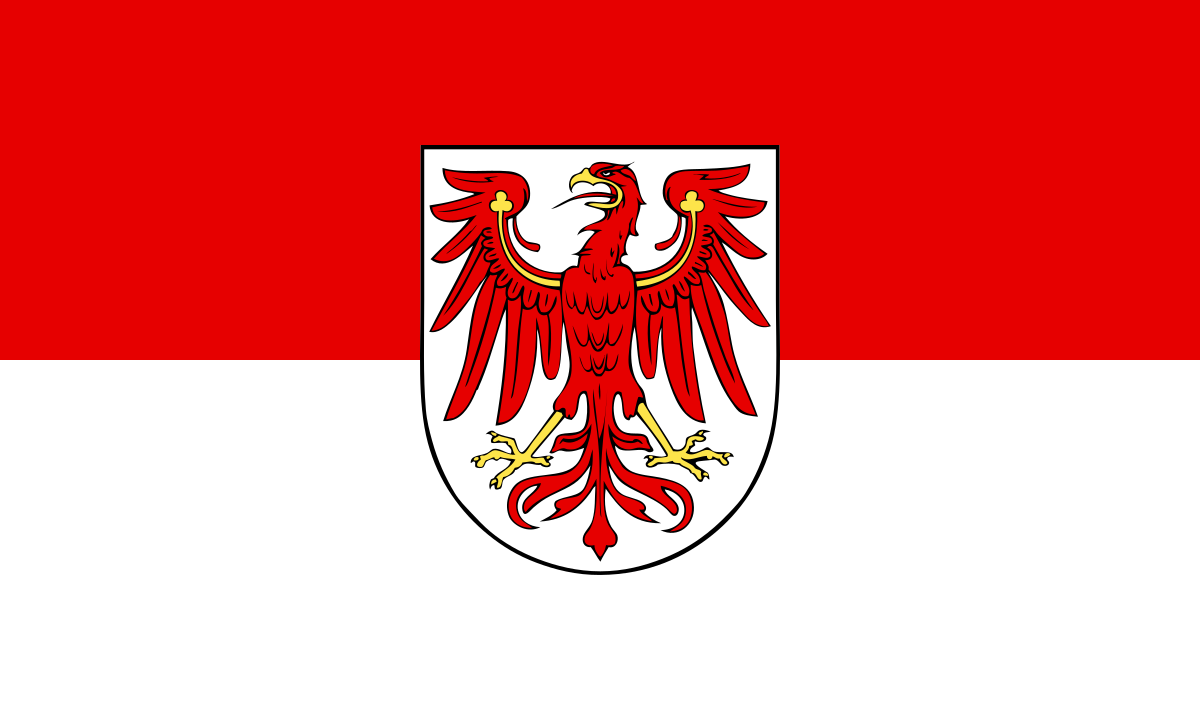 Brandenburg
Brandenburg
 Leben und Style
Leben und Style
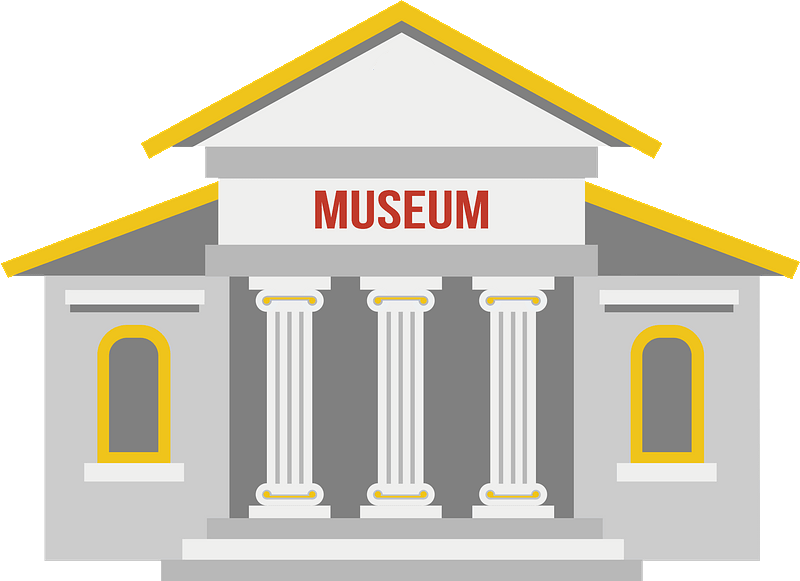 Museum
Museum
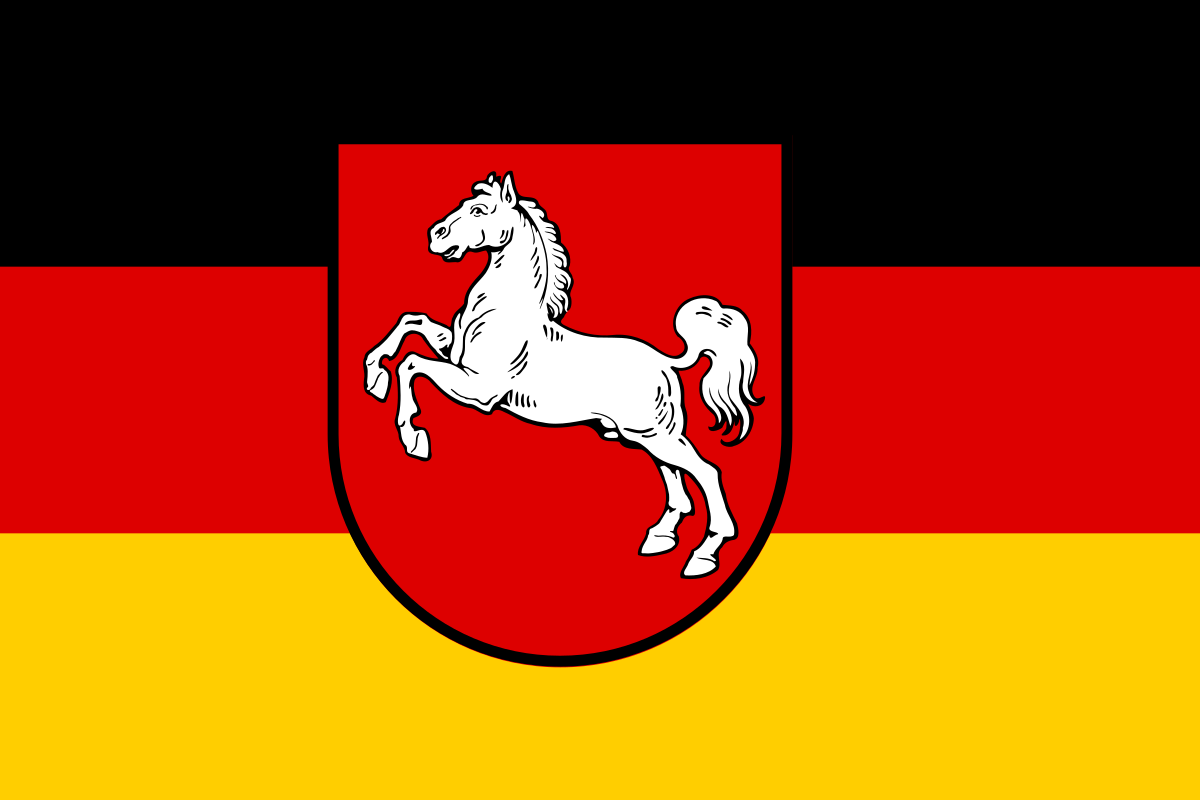 Niedersachsen
Niedersachsen
 Kunst
Kunst
 New York-NY
New York-NY
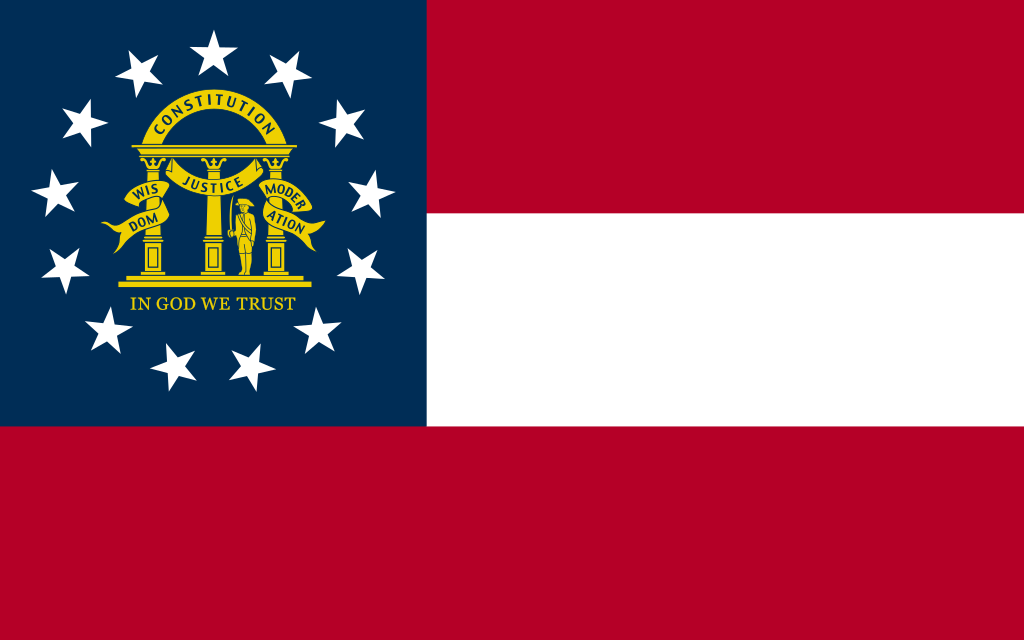 Georgia-GA
Georgia-GA
 Colorado-CO
Colorado-CO